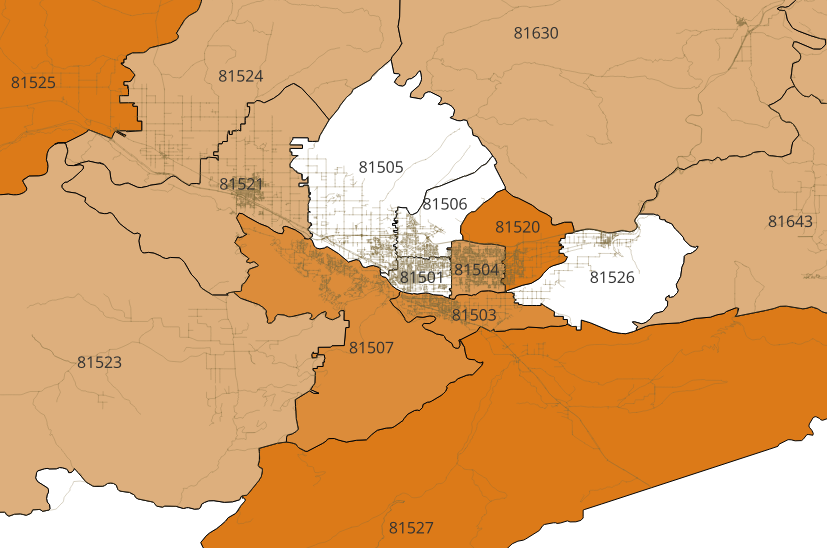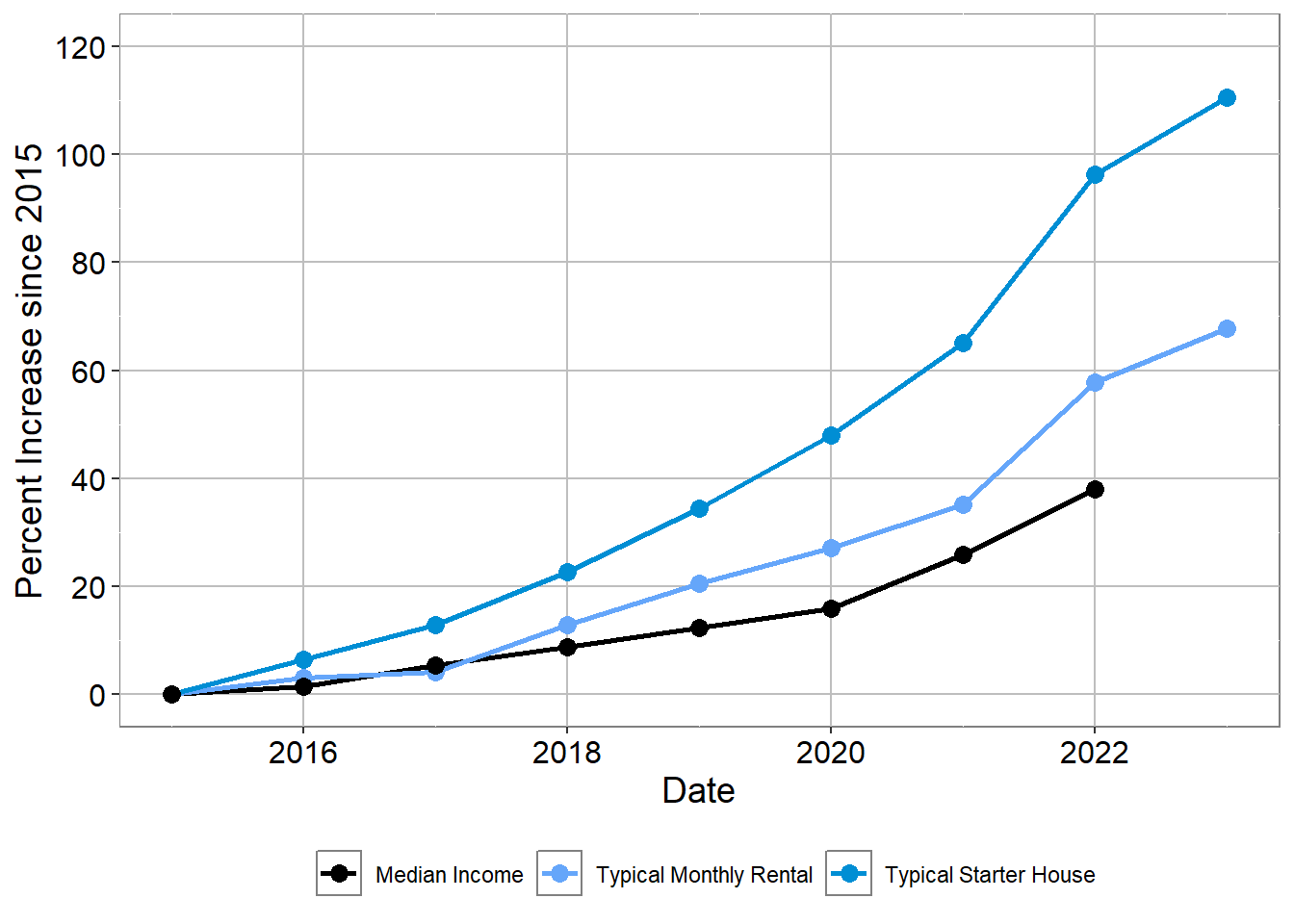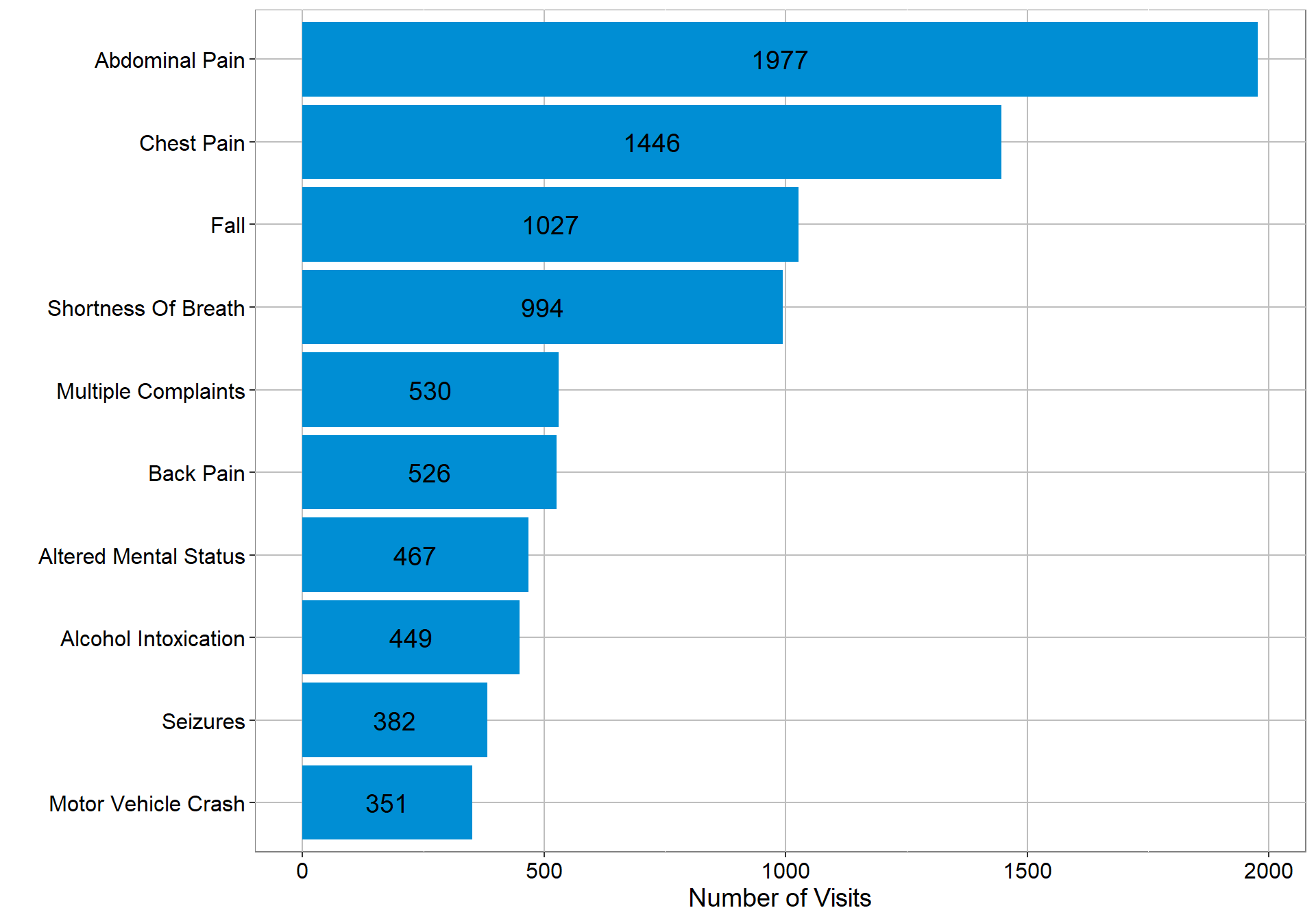
2024-2026 CHNA Priority Findings
Priority Findings Quick View
The CHNA is the first step in a cycle of health assessment and improvement. These priority findings represent major obstacles to healthy choices and outcomes for Mesa County residents and key opportunities for collaborative community intervention.
Many households in Mesa County struggle to reach economic stability.
Mesa County continues to be a childcare desert, but access is increasing.
Housing insecurity significantly burdens Mesa County residents.
Mesa County has a shortage of behavioral health providers.
Mesa County residents frequently use the emergency department for visits that could be completed with primary care doctors at lower cost and more effective whole health care.
Alcohol consumption is common among youth and adults, and plays a role in serious health outcomes.
Rates of suicide ideation, attempt, and death in Mesa County are worrisome.
Youth relationships with their families and peers are primary risk or protective factors in substance use and mental health.
Priority Findings Expanded
Economic Stability
- Households with a single adult in Mesa County have a median household income notably below economic stability.
- The median household income for female single parents is less than half of what’s required for economic stability for a mother with a preschooler and school-age child.
- Since Hispanic households earn less than non-Hispanic households in many metrics, economic stability is likely even further out of reach for Hispanic female single adults.
- A female single parent with two children earning the median household income for her group may be eligible for nearly $27,000 of benefits, closing the gap to economic stability from $40,513 to $13,700
MEDIAN HOUSEHOLD INCOME AND SELF-SUFFICIENCY STANDARD FOR DIFFERENT HOUSEHOLD TYPES (2022)
Childcare Desert
- Currently, there are 3.5 children under age five for every licensed childcare slot in Mesa County.
- In the past three years, several large employers have opened childcare centers that offset slots lost during COVID and have added supply in key high-demand areas.
- When the Clifton Campus childcare center opens, adding 206 slots, the Clifton zip code will no longer be classified as a child care desert - a key success in providing infrastructure and support to young families in the area.
- 1,936 preschool slots across 71 providers are partially funded by Universal Pre-K, increasing access to care by reducing cost to families.
CHILDCARE DESERT BY ZIP CODE, MESA COUNTY, 2024

Housing Insecurity
- Between 2015 and 2022 in Mesa County, starter home prices increased by 96%, rental costs increased by 58%
 , and
, and - In 2021, 25% of households who had moved in the last five years did not wish to move but had to.

- In the 2023-2024 school year, Mesa County Valley School District 51 identified 754 students in 420 families experiencing housing instability. 60% are “doubled up,” which often results in frequent moves.

Percent Increase since 2015 of Housing Costs and Median Income, Mesa County

- In 2022, just 13% of Mesa County residents agreed that Mesa County provides adequate support for mental health and substance use providers.
- In 2023, 19.1% of Mesa County residents had spoken to a mental health or substance use provider in the past year. 12.9% indicated they needed a visit but could not get it.
- The Colorado Department of Public Health and Environment ranks every census tract in Mesa County in the top 30% of mental health and substance use provider shortages across the state.
- The Health Resources and Services Administration indicates a need for eight additional full time psychiatrists, along with other complementary providers, to meet the demand for services on the Western Slope.
Access to Behavioral HealthCare
Mesa County residents who had spoken to a mental health or substance use provider in the past year
Mesa County residents who indicted they needed a mental health visit but could not get it.

Emergency Department Visits
- In an analysis of emergency department visits by Monument Health patients, approximately 40% of visits were for non-emergency diagnoses such as headache and abdominal pain.
- An additional 5% of visits were for emergency diagnoses that could have been prevented by seeking a lower level of care sooner, such as back pain.
- Approximately 35% of visits were for non-preventable emergency care.
Top 10 Primary Health Concerns, Emergency Department, Mesa County (2023)

Alcohol Consumption
- Overall alcohol use in teens decreased from 28% in 2019 to 21% in 2021. However, binge drinking rates remaining at 13%.
- One in ten Mesa County adults is a heavy drinker, and one in six is a current binge drinker. Between 2019 and 2022, binge drinking rates remained steady, and heavy drinking increased.
- Since 2021, between one-third and one-half of suicide deaths and one-third of suicide-related hospital visits have involved alcohol intoxication.

- Since 2016, teen car crashes where the driver was impaired have doubled, from 10 in 2016 to 20 in 2022. Between one-third and one-half of these impaired crashes resulted in an injury, and three resulted in a death.

Students who binge drank in the past 30 days

Students who had their first drink (more than a few sips) before the age of 13

Suicide
- From 2020 to 2022, Mesa County’s suicide death rate was 32.1 per 100,000 residents, compared to 22.6 for Colorado.

- Suicide is the seventh leading cause of death overall, and second leading cause of death for people under the age of 65.

- Youth and young adults ages 10 to 24 have the highest rates for emergency department visits for suicidal ideation and attempt. The rate for girls and young women is more than 1.5 times higher than boys and young men, though visits for working age adults age 25 to 64 are more evenly split between men and women.
- Half of Mesa County adults report having a firearm in their home, which increases risk of suicide death by more than 3 times due to increased access to lethal means. Differences in suicide rates between states are better explained by levels of household gun ownership than by mental health problems, suicidal ideation, or suicide attempts.

RATES OF SUICIDE IDEATIONS AND ATTEMPTS
Emergency Department Visits, Rates per 100,000 residents per year within Age Groups

Youth Protective Factors
Parent Support
- 54% percent of youth indicated they can definitely ask their parents for help with a serious problem, 28% said usually, and 18% said not often or never.
- Youth who reported they could definitely ask for help are one-third as likely to report intense mental health challenges as those who said they could not.
- Youth who reported they could definitely ask for help reported significantly less high risk substance use than youth who said they could not.
Belonging at School
- 58% of youth agreed or strongly agreed to feeling a sense of belonging at school. 28% said not sure, and 14% disagreed or strongly disagreed.
- 72% of youth who did not feel a sense of belonging at school reported serious mental health challenges, compared to 31% who said they did feel a sense of belonging.
- 23% of youth who did not feel a sense of belonging at school reported high risk substance compared to 15% who said they did not feel a sense of belonging.
Students who reported struggling with their mental health according to whether they could ask their parents for help
